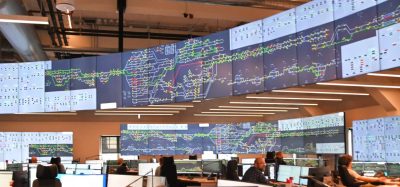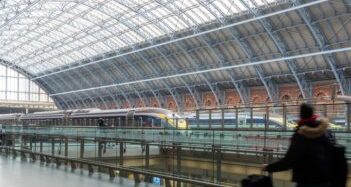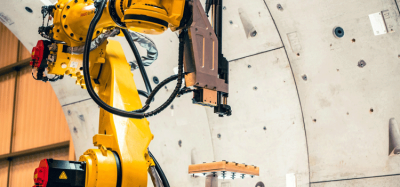New rail bridge in Swiss mountains is officially open
Posted: 31 October 2018 | COWI | No comments yet
Railway traffic will run over the new bridge from 4 November 2018, and the refurbishment is expected to provide another 70 years of use.


A new bridge serving the Rhaetian Railway (RhB) in eastern Switzerland has been officially opened.
The 200m long bridge with a 63m main span will carry a single-track railway over the Hinterrhein (Posterior Rhine) River and A13 highway, improving journey frequency on both the Chur-St. Moritz and Chur-Disentis-Muster routes.
The new bridge has been named ‘Sora Giuvna’ (Little Sister) as it sits immediately alongside, and complements an important existing 19th century steel truss bridge.
Both bridges form part of the feeder line to the Rhaetian Railway’s historical Albula route, which was added to the list of UNESCO World Heritage Sites in 2008.
A joint venture between COWI and WaltGalmarini AG designed the bridge and its surroundings, in association with Danish architects Dissing+Weitling and local landscape architects Hager Partner AG. The construction joint venture of the superstructure comprised Schneider Stahlbau, Joerimann Stahl and Toscano Stahlbau.
COWI Project Manager, Ian Firth, said: “When we participated in the design competition back in 2015, we recognised the enormous historical, cultural and environmental importance of the project, as well as the very particular technical challenges. The new bridge is where the two principal tributaries of the Rhine meet and where the immediate surrounding area includes notable bridges by Christian Menn, Max Bill and Mirko Roš. Furthermore, the limited space for construction adjacent to a busy highway and alongside an active railway meant that access was always going to be difficult.
“We selected a slender and minimalist design with a high architectural quality to complement the dramatic mountainous environment and not detract from the adjacent structure by maximising transparency. Achieving the desired slenderness is always a challenge, particularly for a railway bridge.”
The overall concept can be seen in many design features of the bridge. Inclined steel strut supports sitting on concrete river piers minimise the effective span. A V-shaped steel prop, parallel to the skew alignment of the road, was placed in the tight space between the river and the highway. The deck cross-section consists of a pair of trapezoidal semi-through steel box girders with steel crossbeams and a steel deck plate. With this arrangement a constant girder depth could be maintained over the river and the highway.
Ian added: “Building a structure close to a running railway line and having limited space for temporary works forced us to carefully consider the construction scheme in our design from the very first sketches. All of the bearings are replaceable and we have planned for easy access to the parts that will need to be replaced during the lifetime of the bridge. As always, we worked closely with the contractors and the client to optimise a buildable and easily maintainable design.”
As part of their scope for this new bridge, COWI and team designed the approach viaduct replacement for the historic bridge. The 51m single span bridge will be lifted on top of the historic structure and launched over the highway in 2019.








